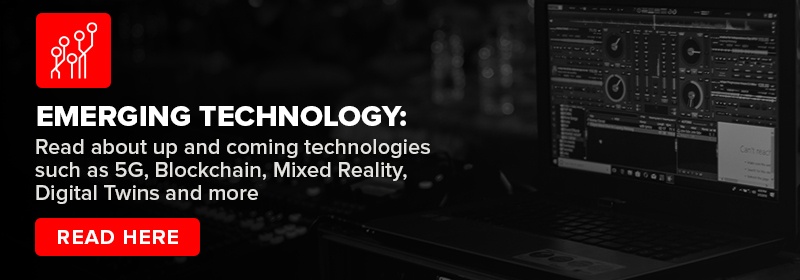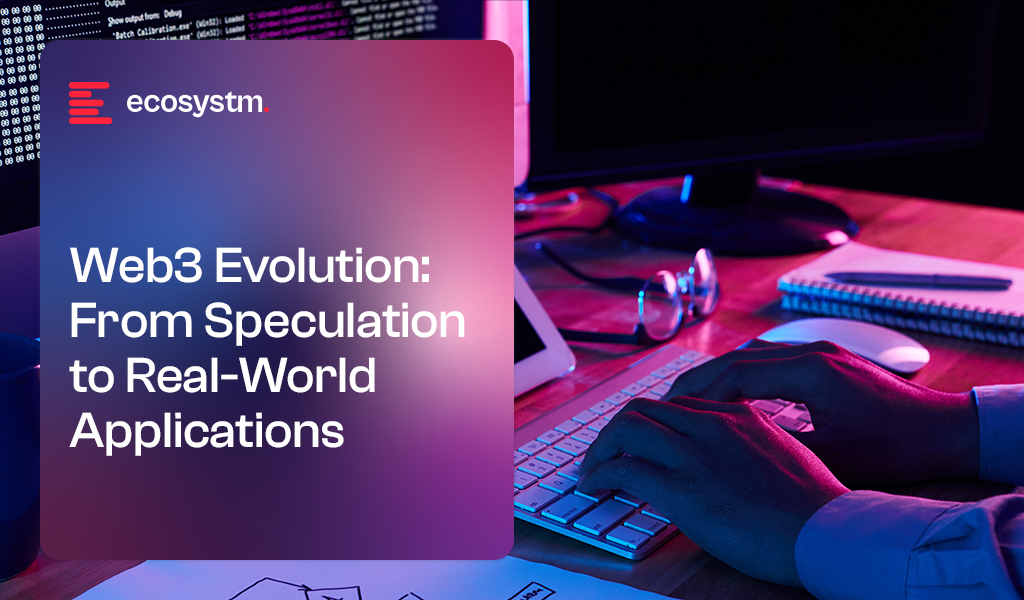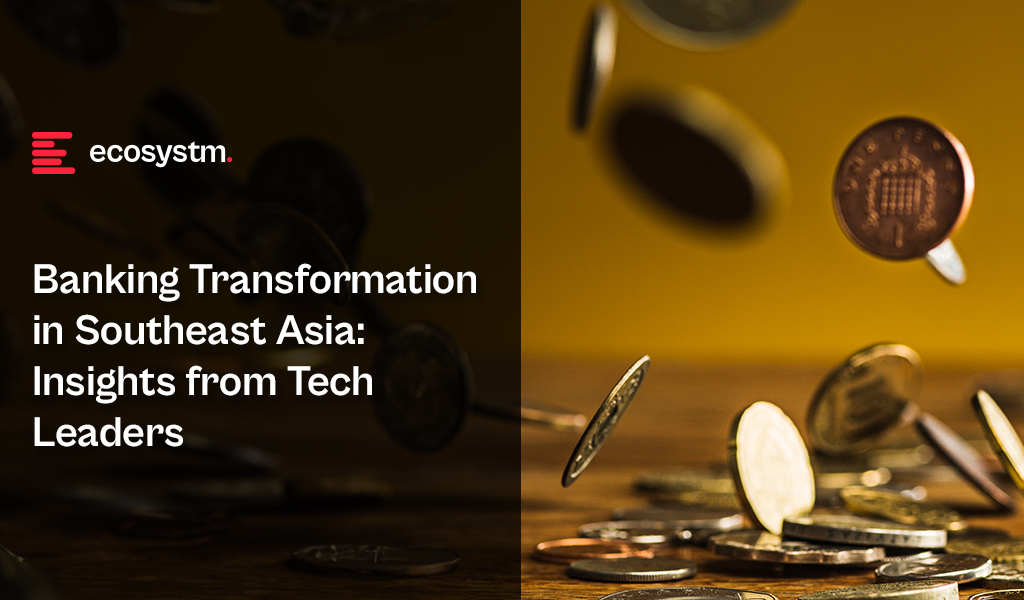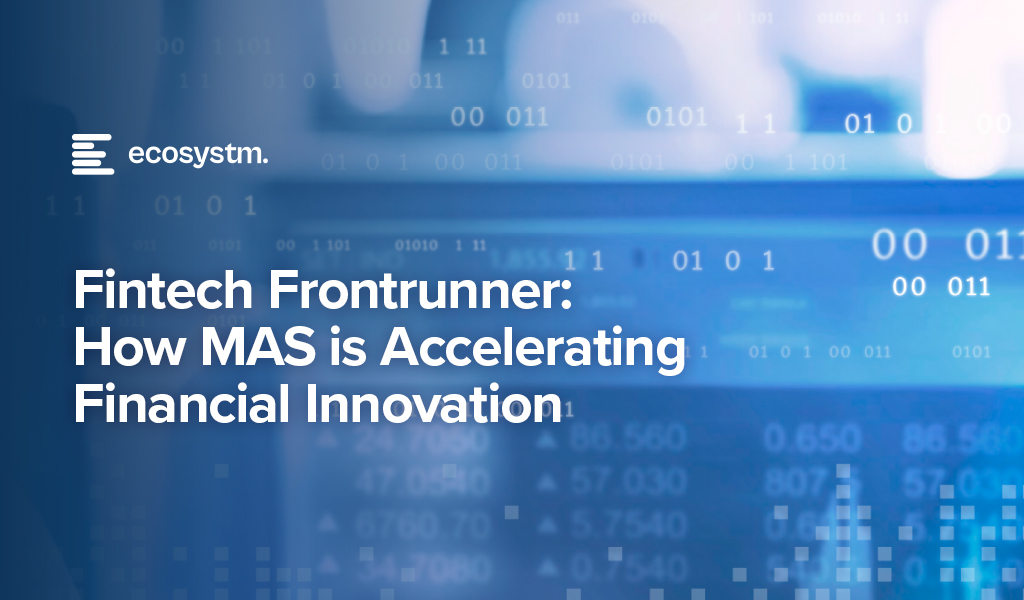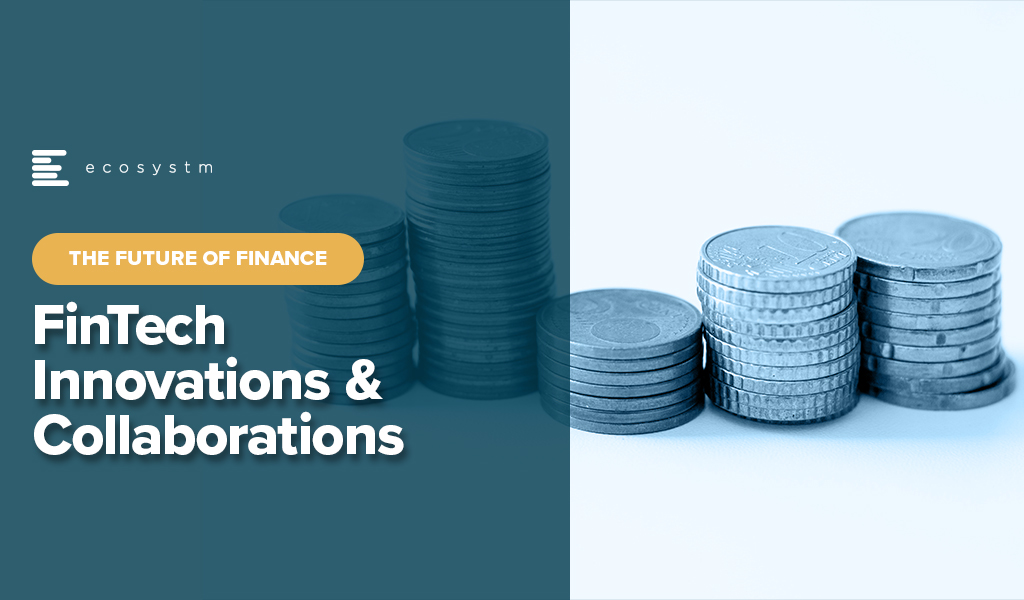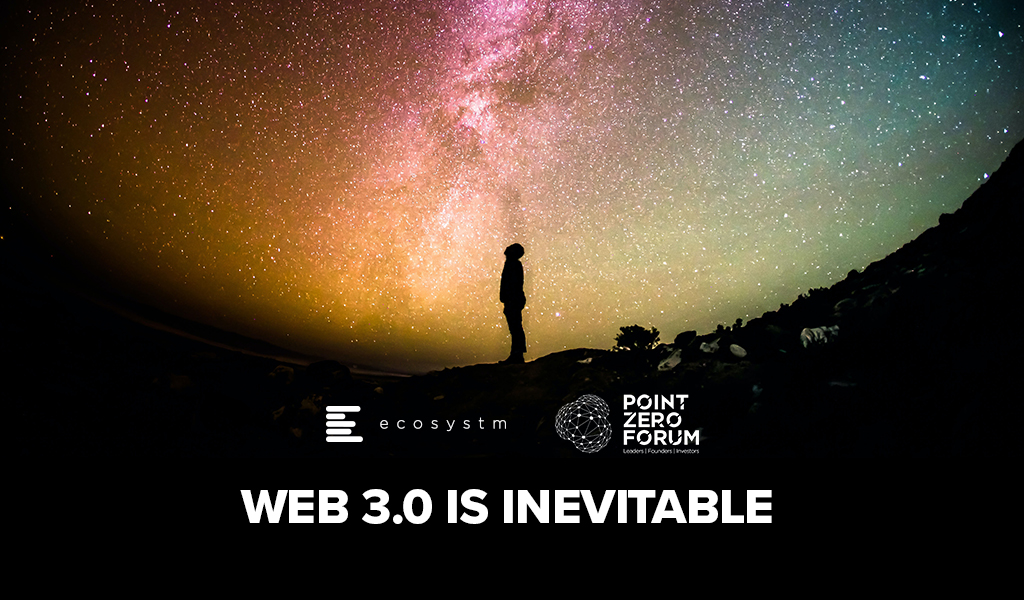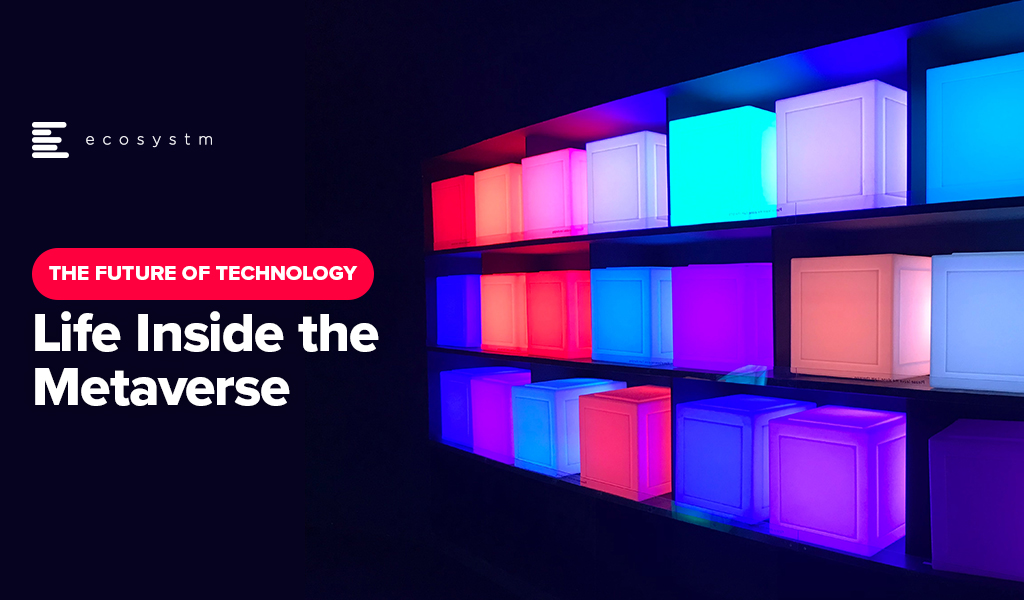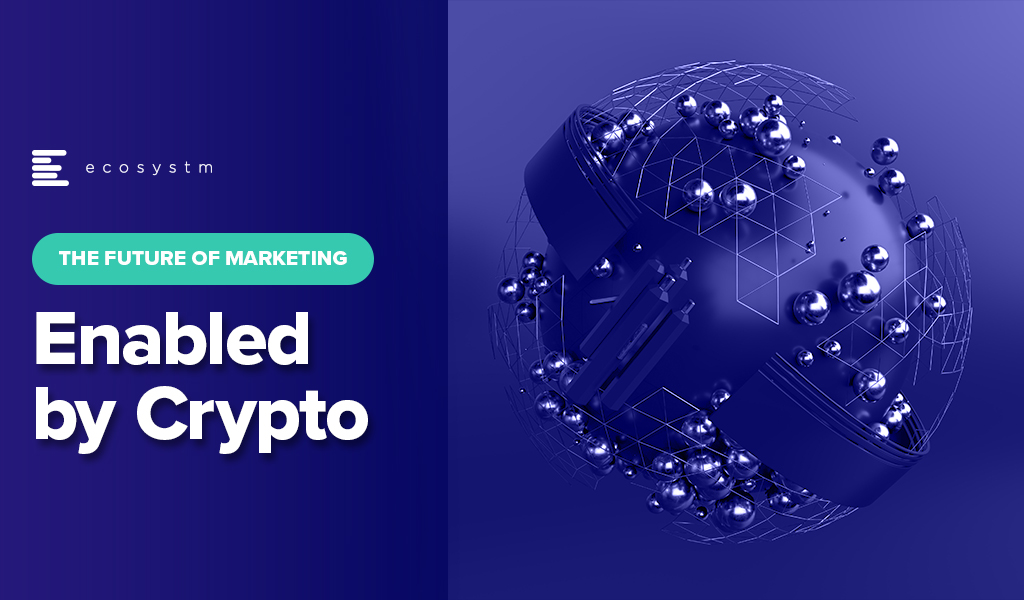GreenTech is reshaping finance by fusing technology with sustainability. From startups to large financial institutions, there’s a clear push to embed climate intelligence into financial decisions. In 2024, green fintech investments hit USD 2.7B – underscoring strong momentum and growing confidence in tech-led sustainability solutions.
The focus is sharp: drive financial innovation while delivering real environmental impact.
Here’s a look at key Green Finance trends that are reshaping the industry.
Click here to download “The Future of Finance is Digital – and Sustainable” as a PDF.
Catalysing Change: Impact Investing
Impact investing is going mainstream, especially in fast-growing emerging markets.
This shift reflects a growing realisation: private capital is critical to climate action, and tackling climate risks is a financial opportunity, not just an ethical choice.
AVPN (Asian Venture Philanthropy Network) has launched ImpactCollab – a platform linking finance professionals with verified impact organisations, due diligence tools, and monitoring resources. Initially used by private banks in Singapore to bolster philanthropy advisory, it will soon expand into blended finance and impact investing, backed by MAS.
Green bonds are also gaining momentum, driven by investor demand, regulatory tailwinds, and rising climate risk awareness. In Singapore, NUS, UOB, and Northern Trust piloted tokenised green bond reporting to boost transparency. India, meanwhile, opened its sovereign green bonds to foreign investors via the Fully Accessible Route (FAR), unlocking global capital for climate goals.
Empowering Customers with Carbon Insights
Carbon tracking is becoming a staple in digital banking, driven by a growing demand for transparency around environmental impact. Banks are responding by embedding carbon calculators into apps – enabling users to measure emissions, benchmark against national averages, and get actionable tips to reduce their footprint.
In Indonesia, Bank Mandiri has launched an in-app feature that helps customers track their personal carbon emissions, making it easy to understand the environmental impact of daily actions. The Royal Bank of Canada has partnered with a carbon management platform to offer businesses tools to monitor and manage their emissions.
These moves reflect a broader shift: banks are embedding sustainability into everyday financial behaviour and deepening customer engagement through purpose-driven services.

Blockchain-Enabled Carbon Trading
Blockchain is transforming carbon trading by enabling a decentralised, transparent, and secure way to verify and transact carbon credits.
This technology addresses long-standing issues of fraud and inefficiency, offering a more reliable and cost-effective approach to managing credits and meeting climate goals.
Thailand has eased crypto regulations to promote blockchain-based carbon trading, positioning itself as a leader in sustainable tech. Meanwhile, US-based financial services firm Northern Trust has launched a blockchain platform that allows project developers to generate, verify, and trade voluntary carbon credits in near real-time. Together, these moves signal a shift toward mainstream adoption of blockchain in carbon markets.
Addressing the Climate Risk Gap
As climate risks intensify, small and medium enterprises (SMEs) are seeking tools to assess and manage their exposure. Despite being highly vulnerable to climate events, SMEs often lack the resources to navigate complex risk landscapes.
Fintechs are stepping in with climate risk-scoring tools that help SMEs identify vulnerabilities and take proactive steps – such as securing insurance or adapting their strategies.
Marsh has highlighted the need for SME-focused climate assessments in New Zealand, particularly for high-risk sectors. Its Climate Risk Navigator helps businesses build resilience and make informed decisions on insurance and sustainability. In India, insurers like ICICI Lombard are using geospatial tech – GIS, satellite imagery, and AI – to power climate-linked products. For example, its satellite-based insurance for wheat farmers in Punjab enables faster, more accurate yield assessments and claim settlements.
Rise of Climate-Conscious Crypto
Once criticised for high energy use, crypto mining is undergoing a green makeover – fuelled by surplus renewable energy and optimised by AI.
What was seen as wasteful is now being reimagined as a tool for grid stability and sustainable growth.
In Switzerland’s Canton of Bern, Bitcoin mining is being explored as a way to absorb excess power and stabilise the grid. In the UK, mining firms are tapping into unused wind energy during off-peak hours to avoid waste. This shift is reaching emerging markets too – Pakistan is converting surplus electricity into value by launching state-backed Bitcoin mining and AI data centres, turning untapped power into economic opportunity.
Ecosystm Opinion
Becoming truly sustainable presents a unique challenge for financial organisations, as their responsibility extends beyond internal operational efficiencies to actively empowering customers and the wider ecosystem to embrace green practices. This is compounded by a growing reliance on increasingly compute-intensive and energy-inefficient technologies.
The recent and growing emphasis on Green Finance offers a promising outlook, suggesting a positive shift in the industry’s trajectory towards a more sustainable future.

2024 was a pivotal year for cryptocurrency, driven by substantial institutional adoption. The approval and launch of spot Bitcoin and Ethereum ETFs marked a turning point, solidifying digital assets as institutional-grade. Bitcoin has evolved into a macro asset, and the ecosystem’s outlook remains robust, with signs of regulatory clarity in the US and increasing broad adoption. High-quality research from firms like VanEck, Messari, Pantera, Galaxy, and a16Z, has further strengthened my conviction.
As a “normie in web3,” my perspective comes from connecting the dots through research, not from early airdrops or token swaps. While the speculative frenzy, rug pulls, and scams at the “casino” end are off-putting, the real potential on the “computer” side of blockchains is thrilling. Events like TOKEN2049 in Dubai and Singapore highlight the ecosystem’s energy, with hundreds of side events now central to the experience.
As the web3 ecosystem evolves, new blockchains, roll-ups, and protocols vie for attention. With 60 million unique wallets in the on-chain economy, adoption is set to expand beyond this base. DeFi transaction volumes have surpassed USD 200B/month, yet the ecosystem remains in its early stages, with only 10 million users.
Despite current fragmentation, the future looks promising. Themes like tokenising real-world assets, decentralised public infrastructure, stablecoins for instant payments, and the convergence of AI and blockchain could reshape finance, identity, infrastructure, and computing. Web3 holds transformative potential, even if not in marketing terms like “unstable” coins or “unreal world assets.”
The Decentralisation Paradox of Web3
Decentralisation may have been a core tenet of web3 at the onset but is also seen as a constraint to scaling or improving user experience in certain instances. I always saw decentralisation as a progressive spectrum and not a binary. It is, however, a difficult north star to maintain, as scaling becomes an actual human coordination challenge.
In Blockchains. We have seen this phenomenon manifest with the Ethereum ecosystem in particular. Of the fifty-plus roll-ups listed on L2 Beat, only Arbitrum and OP Mainnet have progressed beyond Stage 0, with many still not posting fraud proofs to L1. Some high-performance L1s and L2s have deprioritised decentralisation in favour of scaling and UX. Whether this trade-off leads to greater vulnerability or stronger product-market fit remains to be seen – most users care more about performance than underlying technology. In 2025, we’ll likely witness the quiet demise of as many blockchains as new ones emerge.
In Finance. On the institutional side, some aspects of high-value transactions in traditional finance or TradFi, such as custody, need trusted intermediaries to minimise counterparty risk. For web3 to scale beyond the 60-million-odd wallets that participate in the on-chain economy today, we need protocols that marry blockchains’ efficiency, composability, and programmability with the trusted identity and verifiability of the regulated financial systems. While “CeDeFi” or Centralised Decentralised Finance might sound ironical to most in the crypto native world, I expect much more convergence with institutions launching tokenisation projects on public blockchains, including Ethereum and Solana. I like underway pilots, such as one by Chainlink with SWIFT, facilitating off-chain cash settlements for tokenised funds. Some of these projects will find strong traction and scale coupled with regulatory blessings in certain progressive jurisdictions in 2025.
In Infrastructure. While decentralised compute clusters for post-training and inference from the likes of io.net can lower the cost of computing for start-ups, scaling decentralised AI LLMs to make them competitive against LLMs from centralised entities like OpenAI is a nearly impossible order. New metas such as decentralised science or DeSci are exciting because they open the possibility of fast-tracking fundamental research and drug discovery.
Looking Back at 2024: What I Found Exciting
ETFs. BlackRock’s IBIT ETF became the fastest to reach USD 3 billion in AUM within 30 days and scaled to USD 40 billion in 200 days. The institutional landscape now goes beyond traditional ETFs, with major financial institutions expanding digital asset capabilities across custody, market access, and retail integration. These include institutional-grade custody from Standard Chartered and Nomura, market access from Goldman Sachs, and retail integration from fintechs such as Revolut.
Stablecoins. Stablecoin usage beyond trading has continued to grow at a healthy clip, emerging as a real killer use case in payments. Transaction volumes rose from USD 10T to USD 20T in a year, and yes, that is a trillion with a “t”! The current market capitalisation of stablecoins is approximately USD 201.5 billion, slated to triple in 2025, with Tether’s USDT at over 67% market share. We might see new fiat-backed stablecoins being launched this year, such as Ethena’s yield-bearing stablecoin, but I don’t expect USDT’s dominance to change.
RWAs. Even though stablecoins represent 97% of real-world assets on-chain and the dollar value of all other types of assets is still insignificant, the potential market for asset tokenisation is still a staggering USD 1.4T, and with regulatory clarity, even if RWAs on-chain were to quadruple, the resulting USD 50B will be a sliver of the overall opportunity. We can expect more projects in asset classes such as private credit – rwa.xyz is a great dashboard to watch this space.
DePIN. Decentralised public infrastructure across wireless, energy, compute, sensors, identity, and logistics reached a USD 50B market cap and USD 500M in ARR. Key developments include the emergence of AI as a major driver of DePIN adoption, the maturation of supply-side growth playbooks, and the shift in focus toward demand-side monetisation. More than 13 million devices globally contribute to DePINs daily, demonstrating successful supply-side scaling. Notable projects include:
- Helium Mobile: Adding 100k+ subscribers and diversifying revenue streams.
- AI Integration: Bittensor leading decentralised AI with successful subnets.
- Energy DePINs: Glow and Daylight addressing challenges in distributed energy systems.
- Identity Verification: World (formerly Worldcoin) achieving 20 million verified identities.
These trends indicate significant advancements in the web3 ecosystem, and the continued evolution of blockchain technologies and their applications in finance, infrastructure, and beyond holds immense promise for 2025 and beyond.
In my next Ecosystm Insights, I’ll present the trends in 2025 that I am excited about. Watch this space!

The cryptocurrency industry is no longer just a niche market; it’s a burgeoning global financial force, poised to reach a staggering USD 11.7 billion by 2030. Fuelled by rapid technological advancements, evolving regulatory landscapes, and increased mainstream adoption, the sector is facing both unprecedented challenges and exciting opportunities. As blockchain and digital currencies continue to disrupt traditional finance, understanding the key trends driving these changes is essential for anyone navigating the crypto ecosystem.
#1 AI’s Game-Changing Impact on Crypto Exchanges
AI is revolutionising the way crypto exchanges operate – from enhanced efficiency and security to a more personalised user experience.
One of the most significant contributions of AI is the use of automated trading bots. These bots can analyse vast amounts of market data, predict price movements, and execute trades with precision, often outperforming human traders. By operating 24/7 and eliminating emotional biases, AI-powered bots offer a significant advantage in the fast-paced world of cryptocurrency trading.
AI also plays a crucial role in improving security on crypto exchanges. By using machine learning algorithms to monitor and analyse transaction patterns, AI can identify and mitigate the risks of hacks and fraud, which have plagued the cryptocurrency space for years. For example, in 2023 alone, crypto scams led to losses of over USD 5.6 billion in the US.
AI personalises the user experience by offering tailored recommendations based on individual trading behaviour. Additionally, AI performs market sentiment analysis by processing unstructured data from social media, news outlets, and other online platforms, providing valuable insights into market trends. AI also plays a crucial role in improving security on crypto exchanges.
#2 Global Cryptocurrency Regulations: A Maturing Landscape
Cryptocurrency regulations are evolving rapidly around the world as governments strive to manage risks and protect consumers. The Markets in Crypto-Assets (MiCA) regulation in the EU is a significant milestone, requiring licensing for all crypto firms operating within the bloc and mandating stringent consumer protection measures, including capital requirements for stablecoins.
In the US, efforts like the Financial Innovation and Technology (FIT) for the 21st Century Act and the Blockchain Regulatory Certainty Act are expanding oversight of the industry and clarifying the roles of different regulatory bodies. Similar regulatory movements are underway across Asia. Japan has recognised crypto as legal property, and South Korea passed the Virtual Asset Users Protection Act to increase transparency. However, countries like China and India maintain restrictive approaches, with bans on trading and mining.
Brazil’s 2023 Cryptoassets Act demonstrates the global trend towards more robust regulation, aiming to prevent fraud in the crypto sector.
#3 Mergers and Acquisitions: A Strategic Play in the Crypto Space
As traditional financial institutions race to embrace the digital asset revolution, mergers and acquisitions are becoming a strategic tool to gain a foothold in the cryptocurrency market. By acquiring crypto companies with real-world applications and robust infrastructure, these institutions aim to expand their digital asset capabilities and stay ahead of the curve.
Examples like Ripple’s acquisition of Metaco and Coinbase’s purchase of One River Digital highlight the growing interest in integrating traditional financial services with blockchain technology. These M&A deals not only enhance service offerings but also facilitate entry into new markets and the development of innovative solutions.
Looking ahead, we can expect to see even larger financial institutions playing a more active role in crypto mergers and acquisitions. As the demand for scalable, compliant blockchain solutions continues to grow, strategic partnerships and acquisitions will become increasingly important in paving the way for broader adoption of digital assets.
#4 CBDCs and Stablecoins: A New Era in Digital Finance
Central Bank Digital Currencies (CBDCs) are gaining significant traction, with 86% of central banks actively exploring their potential. Major economies like the UK, EU, and US are in various stages of CBDC research and development, carefully considering privacy concerns, financial stability, and the impact on commercial banks. Smaller nations like the Bahamas, Nigeria, and Jamaica have taken the lead, launching CBDCs to serve as digital alternatives to traditional fiat currencies.
In the private sector, stablecoins have experienced substantial adoption. Major financial institutions and payment providers are integrating stablecoins like USDC and Tether (USDT) into their services, processing billions in daily transaction volume. This growth has prompted regulators worldwide to develop comprehensive frameworks, such as the EU’s MiCA regulation and similar efforts in the UK and US. These regulatory initiatives aim to provide clear guidelines while fostering innovation.
As traditional financial institutions explore stablecoin integration for both retail and wholesale applications, the future of digital finance looks increasingly promising.
#5 The Focus on User Experience and Security
As the crypto landscape continues to evolve, the focus on user experience and security has never been more critical. Cyberattacks are becoming increasingly sophisticated, targeting crypto exchanges and DeFi platforms alike. Historically, the industry has been developer-centric, with little attention paid to creating intuitive platforms for everyday users. However, as more consumers embrace blockchain-based financial services, there is a growing demand for seamless, user-friendly interfaces.
Security is another major concern. High-profile hacks and fraud have tarnished the reputation of the crypto industry, leading to skepticism among users and regulators. DeFi platforms, in particular, have been frequent targets due to vulnerabilities in smart contracts. To foster widespread trust and adoption, the industry must prioritise integrating security features by design, such as blockchain analytics for detecting fraudulent activities and advanced risk management tools.
Emerging technologies like social recovery wallets, which help users regain access to lost funds, and improvements in blockchain scalability and efficiency, will be instrumental in attracting more mainstream users.
Crypto’s Future: A Balancing Act
The future of the crypto industry hinges on its ability to strike a delicate balance between innovation, regulation, and security. As digital assets become more deeply integrated into mainstream finance, we can expect to see a surge in tokenised real-world assets, stablecoins, and central bank digital currencies.
Collaboration between regulators, financial institutions, and tech innovators will be essential in shaping a secure and inclusive ecosystem. Ultimately, the success of crypto will depend on its ability to build trust while delivering the efficiency and transparency that define a rapidly evolving digital economy.

Southeast Asia’s banking sector is poised for significant digital transformation. With projected Net Interest Income reaching USD 148 billion by 2024, the market is ripe for continued growth. While traditional banks still hold a dominant position, digital players are making significant inroads. To thrive in this evolving landscape, financial institutions must adapt to rising customer expectations, stringent regulations, and the imperative for resilience. This will require a seamless collaboration between technology and business teams.
To uncover how banks in Southeast Asia are navigating this complex landscape and what it takes to succeed, Ecosystm engaged in in-depth conversations with senior banking executives and technology leaders as part of our research initiatives. Here are the highlights of the discussions with leaders across the region.
#1 Achieving Hyper-Personalisation Through AI
As banks strive to deliver highly personalised financial services, AI-driven models are becoming increasingly essential. These models analyse customer behaviour to anticipate needs, predict future behaviour, and offer relevant services at the right time. AI-powered tools like chatbots and virtual assistants further enhance real-time customer support.

Hyper-personalisation, while promising, comes with its challenges – particularly around data privacy and security. To deliver deeply tailored services, banks must collect extensive customer information, which raises the question: how can they ensure this sensitive data remains protected?

AI projects require a delicate balance between innovation and regulatory compliance. Regulations often serve as the right set of guardrails within which banks can innovate. However, banks – especially those with cross-border operations – must establish internal guidelines that consider the regulatory landscape of multiple jurisdictions.
#2 Beyond AI: Other Emerging Technologies
AI isn’t the only emerging technology reshaping Southeast Asian banking. Banks are increasingly adopting technologies like Robotic Process Automation (RPA) and blockchain to boost efficiency and engagement. RPA is automating repetitive tasks, such as data entry and compliance checks, freeing up staff for higher-value work. CIMB in Malaysia reports seeing a 35-50% productivity increase thanks to RPA. Blockchain is being explored for secure, transparent transactions, especially cross-border payments. The Asian Development Bank successfully trialled blockchain for faster, safer bond settlements. While AR and VR are still emerging in banking, they offer potential for enhanced customer engagement. Banks are experimenting with immersive experiences like virtual branch visits and interactive financial education tools.
The convergence of these emerging technologies will drive innovation and meet the rising demand for seamless, secure, and personalised banking services in the digital age. This is particularly true for banks that have the foresight to future-proof their tech foundation as part of their ongoing modernisation efforts. Emerging technologies offer exciting opportunities to enhance customer engagement, but they shouldn’t be used merely as marketing gimmicks. The focus must be on delivering tangible benefits that improve customer outcomes.

#3 Greater Banking-Fintech Collaboration
The digital payments landscape in Southeast Asia is experiencing rapid growth, with a projected 10% increase between 2024-2028. Digital wallets and contactless payments are becoming the norm, and platforms like GrabPay, GoPay, and ShopeePay are dominating the market. These platforms not only offer convenience but also enhance financial inclusion by reaching underbanked populations in remote areas.
The rise of digital payments has significantly impacted traditional banks. To remain relevant in this increasingly cashless society, banks are collaborating with fintech companies to integrate digital payment solutions into their services. For instance, Indonesia’s Bank Mandiri collaborated with digital credit services provider Kredivo to provide customers with access to affordable and convenient credit options.
Partnerships between traditional banks and fintechs are essential for staying competitive in the digital age, especially in areas like digital payments, data analytics, and customer experience.

While these collaborations offer opportunities, they also pose challenges. Banks must invest in advanced fraud detection, AI monitoring, and robust authentication to secure digital payments. Once banks adopt a mindset of collaboration with innovators, they can leverage numerous innovations in the cybersecurity space to address these challenges.
#4 Agile Infrastructure for an Agile Business
While the banking industry is considered a pioneer in implementing digital technologies, its approach to cloud has been more cautious. While interest remained high, balancing security and regulatory concerns with cloud agility impacted the pace. Hybrid multi-cloud environments has accelerated banking cloud adoption.

Leveraging public and private clouds optimises IT costs, offering flexibility and scalability for changing business needs. Hybrid cloud allows resource adjustments for peak demand or cost reductions off-peak. Access to cloud-native services accelerates innovation, enabling rapid application development and improved competitiveness. As the industry adopts GenAI, it requires infrastructure capable of handling vast data, massive computing power, advanced security, and rapid scalability – all strengths of hybrid cloud.
Replicating critical applications and data across multiple locations ensures disaster recovery and business continuity. A multi-cloud strategy also helps avoid vendor lock-in, diversifies cloud providers, and reduces exposure to outages.

Hybrid cloud adoption offers benefits but also presents challenges for banks. Managing the environment is complex, needing coordination across platforms and skilled personnel. Ensuring data security and compliance across on-prem and public cloud infrastructure is demanding, requiring robust measures. Network latency and performance issues can arise, making careful design and optimisation crucial. Integrating on-prem systems with public cloud services is time-consuming and needs investment in tools and expertise.
#5 Cyber Measures to Promote Customer & Stakeholder Trust
The banking sector is undergoing rapid AI-driven digital transformation, focusing on areas like digital customer experiences, fraud detection, and risk assessment. However, this shift also increases cybersecurity risks, with the majority of banking technology leaders anticipate inevitable data breaches and outages.

Key challenges include expanding technology use, such as cloud adoption and AI integration, and employee-related vulnerabilities like phishing. Banks in Southeast Asia are investing heavily in modernising infrastructure, software, and cybersecurity.
Banks must update cybersecurity strategies to detect threats early, minimise damage, and prevent lateral movement within networks.

Employee training, clear security policies, and a culture of security consciousness are critical in preventing breaches.
Regulatory compliance remains a significant concern, but banks are encouraged to move beyond compliance checklists and adopt risk-based, intelligence-led strategies. AI will play a key role in automating compliance and enhancing Security Operations Centres (SOCs), allowing for faster threat detection and response. Ultimately, the BFSI sector must prioritise cybersecurity continuously based on risk, rather than solely on regulatory demands.
Breaking Down Barriers: The Role of Collaboration in Banking Transformation
Successful banking transformation hinges on a seamless collaboration between technology and business teams. By aligning strategies, fostering open communication, and encouraging cross-functional cooperation, banks can effectively leverage emerging technologies to drive innovation, enhance customer experience, and improve efficiency.
A prime example of the power of collaboration is the success of AI initiatives in addressing specific business challenges.

This user-centric approach ensures that technology addresses real business needs.
By fostering a culture of collaboration, banks can promote continuous learning, idea sharing, and innovation, ultimately driving successful transformation and long-term growth in the competitive digital landscape.

As they continue to promote innovation in the Financial Services industry, the Monetary Authority of Singapore (MAS) introduced the Financial Sector Technology and Innovation Scheme 3.0 (FSTI 3.0) earlier this week, pledging up to SGD 150 million over three years. FSTI 3.0 aims to boost innovation by supporting projects that use cutting-edge technologies or have a regional scope, while strengthening the technology ecosystem in the industry. This initiative includes three tracks:
- Enhanced Centre of Excellence track to expand grant funding to corporate venture capital entities
- Innovation Acceleration track to support emerging tech based FinTech solutions, and
- Environmental, Social, and Governance (ESG) FinTech track to accelerate ESG adoption in fintech
Additionally, FSTI 3.0 will continue to support areas like AI, data analytics, and RegTech while emphasising talent development. We can expect to see transformative financial innovation through greater industry collaboration.
MAS’ Continued Focus on Innovation
Over the years, the MAS has consistently been a driving force behind innovation in the Financial Services industry. They have actively promoted and supported technological advancements to enhance the industry’s competitiveness and resilience.
The FinTech Regulatory Sandbox framework offers a controlled space for financial institutions and FinTech innovators to test new financial products and services in a real-world setting, with tailored regulatory support. By temporarily relaxing specific regulatory requirements, the sandbox encourages experimentation, while ensuring safeguards to manage risks and uphold the financial system’s stability. Upon successful experimentation, entities must seamlessly transition to full compliance with relevant regulations.
Innovation Labs serve as incubators for new ideas, fostering a culture of experimentation and collaboration. They collaborate with disruptors, startups, and entrepreneurs to develop groundbreaking solutions. Labs like Accenture Innovation Hub, Allianz Asia Lab, Aviva Digital Garage, ANZ Innovation Lab, and AXA Digital Hive drive create prototypes, and roll out market solutions.
Building an Ecosystem
Partnerships between financial institutions, technology companies, startups, and academia contribute to Singapore’s economic growth and global competitiveness while ensuring adaptive regulation in an evolving landscape. By creating a vibrant ecosystem, MAS has facilitated knowledge exchange, collaborative projects, and the development of innovative solutions. For instance, in 2022, MAS partnered with United Nations Capital Development Fund (UNCDF) to build digital financial ecosystems for MSMEs in emerging economies.
This includes supporting projects that address environmental, social, and governance (ESG) concerns within the financial sector. For instance, MAS worked with the People’s Bank of China to establish the China-Singapore Green Finance Taskforce (GFTF) to enhance collaboration in green and transition finance. The aim is to focus on taxonomies, products, and technology to support the transition to a low-carbon future in the region, co-chaired by representatives from both countries.
MAS has also promoted Open Banking and API Frameworks to encourage financial institutions to adopt open banking practices enabling easier integration of financial services and encouraging innovation by third-party developers. This also empowers customers to have greater control over their financial data while fostering the development of new financial products and services by FinTech companies.
Regulators in Asia Pacific Taking a Proactive Approach
While Singapore is at the forefront of financial innovations, other regulatory and government bodies in Asia Pacific are also taking on an increasingly proactive role in nurturing innovation. This stance is being driven by a twofold objective – to accelerate economic growth through technological advancements and to ensure that innovative solutions align with regulatory requirements and safeguard consumer interests.
Recognising the potential of fintech to enhance financial services and drive economic growth, the Hong Kong Monetary Authority (HKMA) established the Fintech Facilitation Office (FFO) to facilitate communication between the fintech industry and traditional financial institutions. The central bank’s Smart Banking Initiatives, including the Faster Payment System, Open API Framework, and the Banking Made Easy initiative that reduces regulatory frictions help to enhance the efficiency and interoperability of digital payments.
The Financial Services Agency of Japan (FSA) has been actively working on creating a regulatory framework to facilitate fintech innovation, including revisions to existing laws to accommodate new technologies like blockchain. In 2020, FSA launched the Blockchain Governance Initiative Network (BGIN) to facilitate collaboration between the government, financial institutions, and the private sector to explore the potential of blockchain technology in enhancing financial services.
The Central Bank of the Philippines (Bangko Sentral ng Pilipinas – BSP) has launched an e-payments project to overcome challenges hindering electronic retail purchases, such as limited interbank transfer facilities, high bank fees, and low levels of trust among merchants and consumers. The initiative included the establishment of the National Retail Payment System, a framework for retail payment, and the introduction of automated clearing houses like PESONet and InstaPay. These efforts have increased the percentage of retail purchases made electronically from 1% to over 10% within five years, demonstrating the positive impact of effective cooperation and innovative policies in driving a shift towards a cash-lite economy.
The promotion of fintech innovation highlights a collective belief in its potential to transform finance and boost economies. As regulations adapt for technologies like blockchain and open banking, the Asia Pacific region is promoting collaboration between traditional financial institutions and emerging fintech players. This approach underscores a commitment to balance innovation with responsible oversight, ensuring that advanced financial solutions comply with regulatory standards.

Innovation and collaboration are the cornerstones of FinTech success stories. Successful FinTechs have identified market gaps and designed innovative solutions to address these gaps. They have also built an ecosystem of partners – such as other FinTechs, large corporates and financial services organisations – to deliver better customer experiences, create process efficiencies and make compliance easier.
As FinTechs have become mainstream over the years the innovations and the collaborations continue to make technology and business headlines.
Here are some recent trends:
- The Growth of Cross-border Finance. Globalisation and the rise of eCommerce have created a truly global marketplace – and financial agencies such as the MAS and those in the EU are responding to the need.
- Transparency through Smart Contracts. As businesses and platforms scale applications and capabilities through global partnerships, there is a need for trusted, transparent transactions. Symbiont‘s partnership with Swift and BNB Chain‘s tie-up with Google Cloud are some recent examples.
- Evolution of Digital Payments. Digital payments have come a long way from the early days of online banking services and is now set to move beyond digital wallets such as the Open Finance Association and EU initiatives to interlink domestic CBDCs.
- Banks Continue to Innovate. They are responding to market demands and focus on providing their customers with easy, secure, and enhanced experiences. NAB is working on digital identity to reduce fraud, while Standard Chartered Bank is collaborating with Bukalapak to introduce new digital services.
- The Emergence of Embedded Finance. In the future, we will see more instances of embedded financial services within consumer products and services that allows seamless financial transactions throughout customer journeys. LG Electronics‘ new NFT offering is a clear instance.
Read below to find out more.
Download The Future of Finance: FinTech Innovations & Collaborations as a PDF

The fundamentals of Web 3.0 are deeply rooted in technology that is ever-changing and continuously evolving. Web 3.0, powered by blockchains and crypto, is the Internet’s biggest technological upgrade since it became mainstream in the 1980s.
What is Web 3.0 and Why Does it Matter?
Web 1.0 (1990-early 2000s) – READ. The early Internet was characterised by an open-source protocol like HTTP, where the value accrued to the users and builders. In this era, technology companies such as Google, Yahoo and Amazon made their mark by layering on services such as search, directory listings and media publishing over an open-source infrastructure, essentially creating an online version of the offline world. The core contributors to digital media were mainly journalists, writers and reporters who reproduced pieces of their print content in a digital format. There was very little censorship during this period and the information was available mainly as databases.
Web 2.0 (early 2000-today) – READ & WRITE. This phase witnessed a wave of tech advancement, upgrades to servers, faster Internet speeds, development of complex APIs, algorithms and code to create peer-to-peer opportunities, user-generated content and social networking. Services such as Facebook and Twitter began monetisation of the increased user base through digital advertising. The years 2007-2012 saw a mobile revolution with Apple providing users with their first iPhone in 2007 and opened doors to third-party apps and builders. Facebook’s mobile pivot in 2012 amplified user social connectivity tremendously.
The tech architecture for Web 2.0 is built on a client-server protocol, where users are the clients, contributing content and the companies control the servers. The core functionality of the early Internet which was open for anyone to use and build on, has now transformed where the authority rests in the hands of the few. The rise of the creator economy is dependent on the frameworks developed by centralised companies. Software and hardware upgrades and renunciation of data and privacy rights by users to platforms have further accelerated centralisation of power. The Web 2.0 ecosystem now has a monopolistic culture where the companies decide who can participate, in what capacity, and how much value to share with stakeholders. Consumers do not have any ownership of their data or control over how it gets used; while creators give up rights to their content and do not have the ability to export their fanbase out from the platforms they have used, to interact with their communities. There is no incentive alignment between corporations and networks, and the users have no say in the platforms’ economics and governance. Web 2.0 is an Internet era built on ‘rented land’ where users don’t own anything.
Web 3.0 (2020 onwards) – READ, WRITE and OWN. Web 3.0 is a new computing platform, a paradigm shift towards a more democratised Internet, which is owned by the users and builders who create and transfer value in a trustless and decentralised way, facilitated through tokens. It is re-engineering the Internet’s open protocol and leveraging its architecture to benefit people rather than corporations.
The Core Components of Web 3.0
In order to understand the importance of Web 3.0 as technological innovation, it is essential to learn about its core components – tokens and blockchains.
Tokens are pieces of code that are used to transact over a blockchain and provide a record of digital ownership. They can be fungible and non-fungible. Fungible tokens are interchangeable (fiat currency, cryptocurrencies like Bitcoin). Non-Fungible tokens are unique, i.e no two tokens are alike (such as pieces of art).
The genesis of the blockchain architecture was developed by a pseudonymous individual named Satoshi Nakamoto in 2009, who developed a peer-to-peer electronic cash system called Bitcoin (the blockchain), that uses its native token (BTC) to transact over its network. Blockchain is a decentralised distributed ledger system, where transactions are executed and recorded in a series of immutable blocks on an interconnected network of nodes (computers).
Blockchains can be imagined as supercomputers that process thousands of transactions in exchange for incentives or tokens that accrue to miners and validators as rewards. Tokens are a new digital asset class that is increasingly seen as a store of value (Bitcoin), means of exchange (Ethereum, Solana and alternative cryptocurrencies), social currency (Rally.io) and several other use cases that offer utility and monetisation abilities to creators, entertainers and artists.
Future Value Drivers
Since 2020, we have seen the growth of cryptocurrencies and blockchain adoption by institutions and retail investors due to the decoupling of crypto into various value drivers like Decentralised Finance (DeFi), Non Fungible Tokens (NFTs) and Decentralised Autonomous Organisations (DAOs).
DeFi. DeFi refers to a financial system that runs on blockchain technology, and uses smart contracts that replace the need for traditional financial (TradFi) businesses to act as intermediaries. Core functions such as lending, borrowing. and transacting takes place seamlessly without the need for banks to execute the transactions. DeFi runs on code, a set of rules that are predefined on smart contracts. Users of the decentralised protocol own the network and participate in the rewards through token distribution. Tokens are distributed as incentives to users who are contributors to the network. There are strong differences between DeFi and TradiFi on trust, transparency, identity and access.
NFTs. NFTs are a record of ownership of digital assets on a blockchain. Technological advancements to the Bitcoin Blockchain genesis architecture and the introduction of smart contracts to blockchains such as Ethereum enabled a new use case of tradeable programmable tokens to emerge in the crypto landscape.
NFTs have been transformational to digital asset ownership and saw exponential growth in user adoption in 2020. A key milestone event in the history of NFTs is the USD 69 million sale of ‘Everydays: the first 5000 days’, by digital artist Beeple at an art auction organised by Christie’s in March 2020. Transaction volumes have now surpassed nearly USD 13 billion.
NFT represents anything digital that’s unique (non-fungible), has value, can be traded and its ownership secured on a blockchain. NFTs most commonly represent digital art, but they can be digital wearables, in-game virtual objects, a contract deed attached to a property, a domain name, or even a piece of writing such as this insight! For the first time, it is possible to exchange value between two trustless individuals anywhere in the world without them needing to disclose their identities or establish any contact and have asset ownership transferred and recorded on a blockchain.
DAO. A DAO is a community that is created and managed by its members who band together to achieve a common objective. Web 3.0 has enabled a dynamic shift in behavioural economics which is drawing people to it. The shift can be described as triabism at times but has been fascinating. The ongoing pandemic made more people spend time online and in the Metaverse, connect with others and also create. That happy place is called a DAO, where humans meet to share, connect, and drive value in a digital world known as the Metaverse.
Here are some ways that a DAO differs from a corporate. Companies are governed by a hierarchical system whereas DAOs are run like cooperatives in a flat structure. Company management takes decisions whereas DAO members vote on proposals to take collective decisions. Companies hire talent that meets certain criteria whereas anyone can join a DAO if they hold the DAO tokens/NFT or get invited to join the community. Companies compensate their employees with salaries whereas DAOs reward contributors with tokens.
The Future of a Decentralised Economy
Web 3.0 is transforming the economics of the creative, media and entertainment industry by changing the dynamics of how value gets created and distributed. It is an Internet that works for stakeholders who own it and create value for themselves. The shift from Web 2.0 to Web 3.0 is taking place more rapidly than the previous evolution of the Internet. The power dynamics and value generation are fundamentally changing how we view the Internet.
Web 3.0 is inevitable!

While the concept of the Metaverse can be complex and confusing, it is not hard to imagine the benefits it will bring to an enterprise. In Applying the Metaverse to the Enterprise, I talked about how a Metaverse is nothing more than real life in digital form. Let us now look at what life inside a Metaverse will look like.
The 4 Key Capabilities of the Metaverse
A Metaverse will allow for individual validation within a corporate environment through the association of four key capabilities:
Digital Built Environment. The digital built environment is the representation of the physical surroundings that provide the setting for human activity. A Metaverse provides a powerful, online, 3-D and 4-D representation of the physical workplace.
Interaction. Inhabitants of a Metaverse are known as avatars or residents. They can be representatives of staff or customers; and personalise an individuals’ interaction with the information being sought.
Navigation. Natural search occurs when the capability exists to spatially move an avatar through a digital environment. Today, the power of spatial search is self-evident and highlighted through applications such as Google Maps.
Collaboration. Social and information networks are created when two or more parties can openly and freely exchange information. They are also the basis of contemporary, decentralised digital economics (e.g., blockchain). Organisations are increasingly moving to incorporate emerging social technologies into traditional collaboration environments for decades.
The choice of a Metaverse would seem obvious for large organisations looking to move away from a process view of information. Building or construction analogies are already used to deal with the abstraction of information within their complex physical environments. It is, for example, a key principle of enterprise architecture. As a result, the decision to utilise a metaverse as a channel is ultimately not a big call.
The Metaverse will Require a Paradigm Shift
As a presentation layer, a Metaverse makes navigation and discovery easier and more intuitive. Adopting this new approach would allow a completely social and familiar way to interact with information. It would provide organisational benefits beyond the current capabilities of traditional data and process-driven environments and become the catalyst for major differences in the treatment of enterprise information. The interactive context of a Metaverse will also require differences in the way information is expressed.
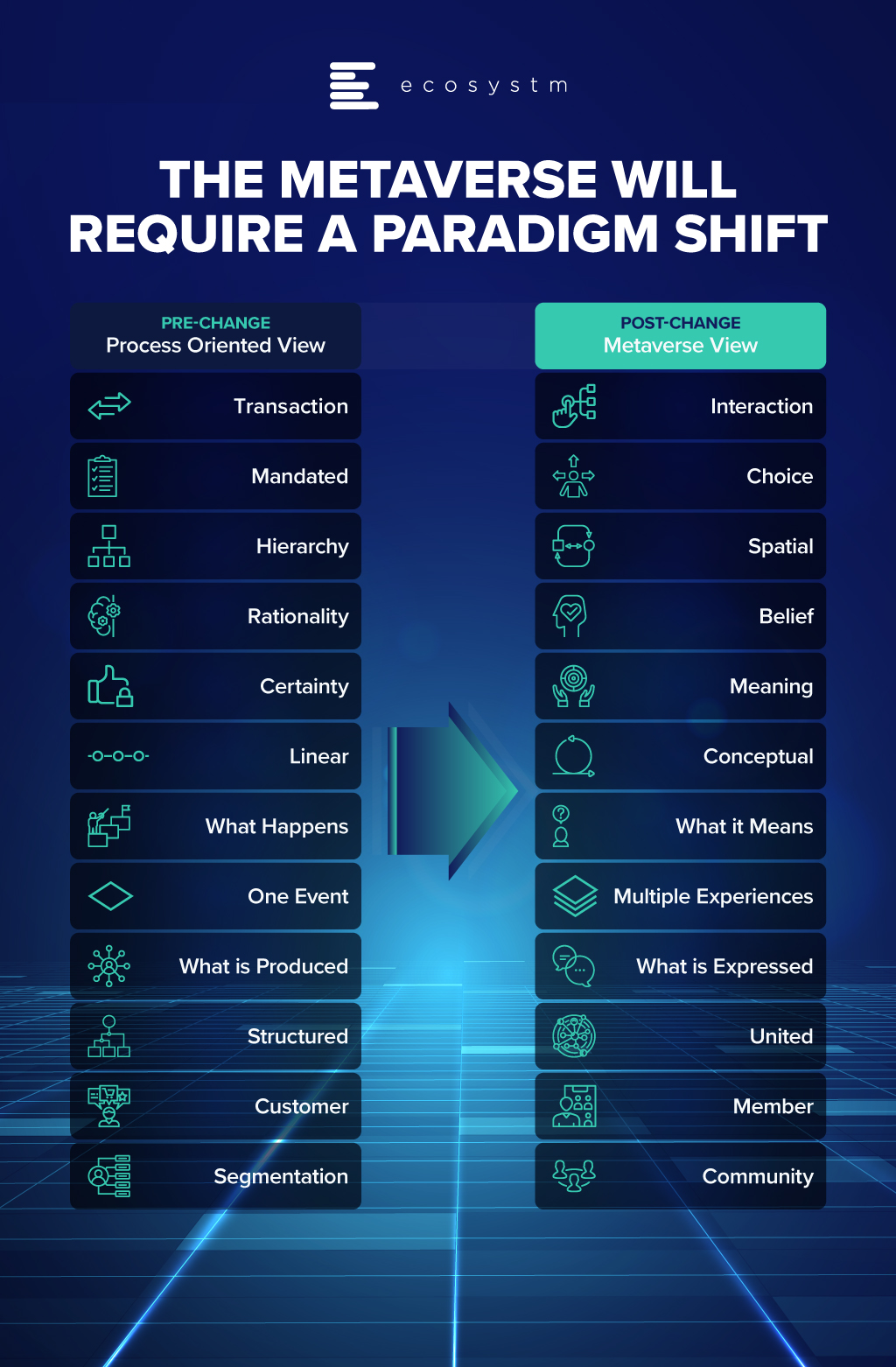
Although the tech industry is strewn with concepts of “exchange” and “collaboration”, such terms are really actions that occur after an audience has engaged with the content. The Metaverse approach potentially addresses this challenge by first getting users comfortable with their environment before encouraging them to interact in it with others. Using these differences as key drivers, the creation of a Metaverse can focus on delivering a platform for personalised information discovery, specific to the responsibilities and opportunities for individuals within an organisation or broader ecosystem.
This is just one example of the Metaverse and enterprise. There are many others. For example, think about fully integrated asset management platforms used by retail property groups or airport corporations. The Metaverse will now allow these organisations to commercialise their full physical retail assets in a digital metaverse by offering tenants both a physical store and a digital store. Or even offer the digital space to a whole new portfolio of different tenants. The commercial upside of such models is significant and sure to drive investment.
Overcoming the challenges of introducing a new information delivery channel seems like a difficult transformation choice today. Ultimately, this is the transition choice of Web 3.0. It is one that acknowledges that existing process-oriented channels will fail to meet the primary drivers and demands underpinning the growth of the new Web 3.0 world: individualism, personalisation, and decentralisation.
Yes, virtual reality environments are a super-appealing channel because of their immediate visual gratification, but behind that façade, the monetisation of physical, commercial data and the continual rise of infonomics is what it is all about.

In the last decade, blockchain technology and crypto have been laying the foundations for an alternative reality in which humans interact and organise themselves without the mediation of a third party. Cryptocurrencies are almost a USD 2 trillion asset today and billions of dollars are being traded globally without the need of a bank or intermediary, with transactions secured on blockchains. Non-fungible tokens (NFTs) – currently valued at over USD 500 million – fuelled the democratisation of the art world and provided a proof-of-concept that crypto enables wider communities to transact pseudonymously.
The discovery, storytelling, evangelism, transfer of ownership in exchange for monetary value, are taking place seamlessly in the decentralised world, without a single dollar being spent on advertising. There is no central owner or authority directing this phenomenon.
Read on to find out more about:
- How crypto is causing a Marketing revolution
- The ways corporates, consumers and content creators are leveraging it
- The growth in Decentralised Marketing (DeMar)
- The NFT use case for brands
- Brands in Web 3.0 today
Download The Future of Marketing: Enabled by Crypto as a PDF
